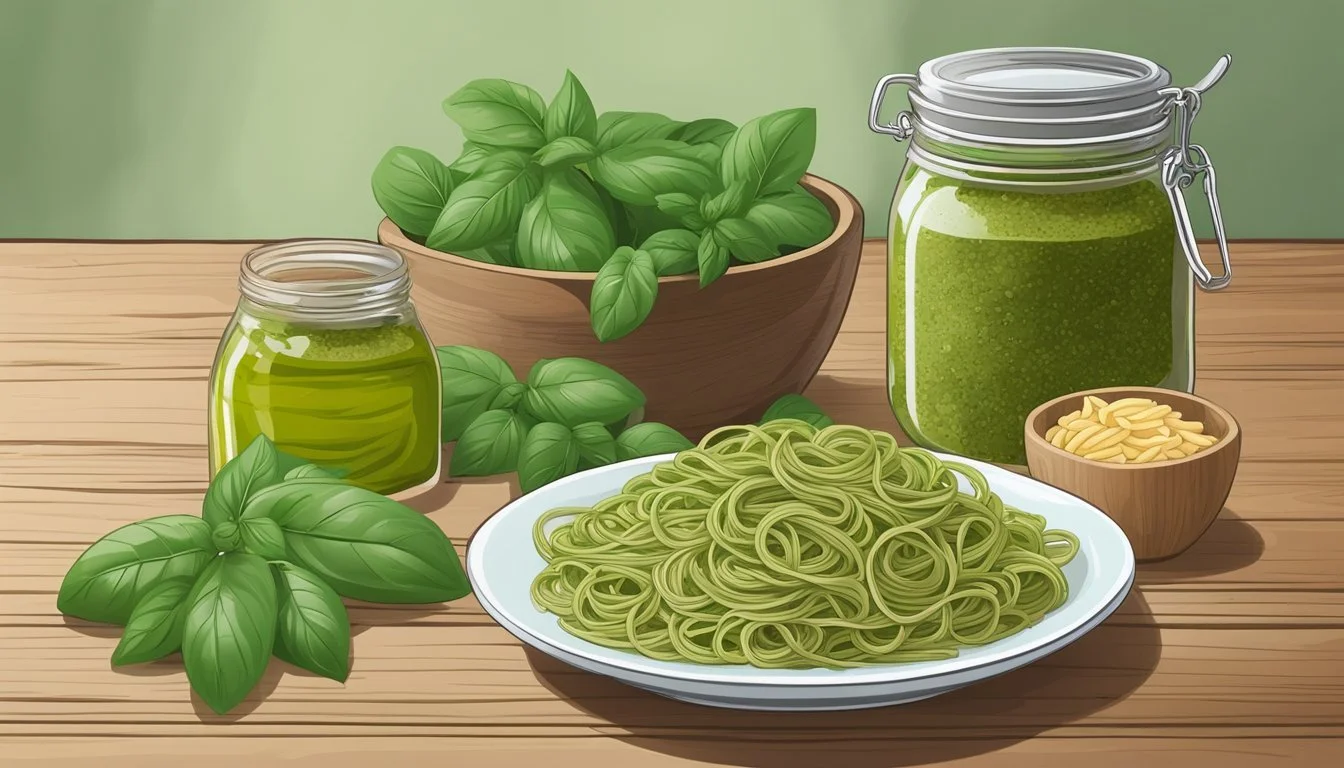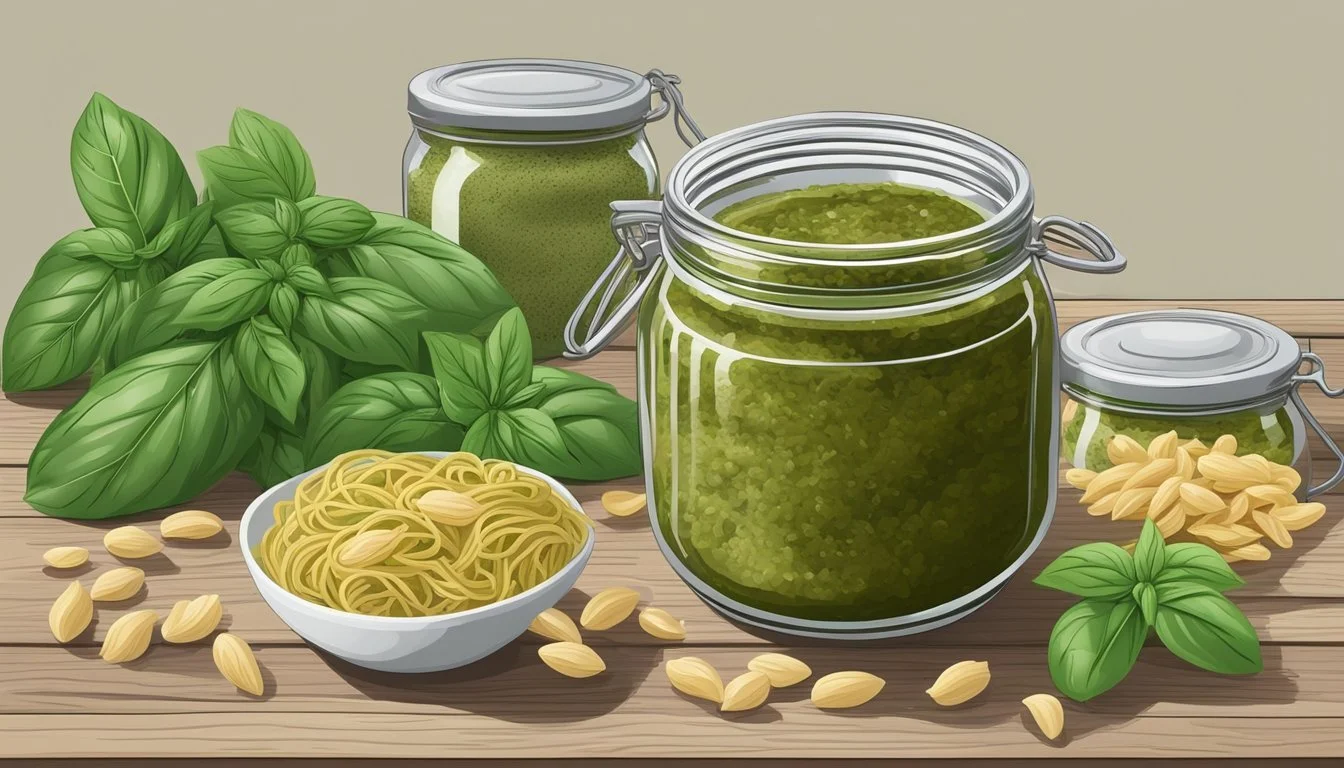Is Pesto Sauce Gluten-Free?
Understanding Your Dietary Choices
Pesto sauce, a staple in Italian cuisine, is renowned for its vibrant green color and rich, nutty flavor. It traditionally consists of a blend of fresh basil, garlic, pine nuts, Parmigiano-Reggiano cheese, and olive oil. Given its traditional ingredients, pesto is inherently gluten-free, making it a delicious and suitable option for those adhering to a gluten-free diet.
However, the gluten-free status of pesto can be compromised when it comes to ready-made or commercially produced variants. Some brands may include additives or use processing methods that introduce gluten into the sauce. Therefore, for individuals with celiac disease or gluten sensitivity, it's imperative to examine the ingredient labels carefully. Homemade pesto remains a reliable way to enjoy this Italian condiment without the worry of gluten contamination.
In the culinary world where the demand for gluten-free options is on the rise, pesto sauce remains a versatile and flavorful addition to various dishes. Whether used as a pasta sauce, a spread for sandwiches, or a dressing for salads, pesto can enhance meals while being mindful of dietary restrictions.
Understanding Pesto
In the culinary world, pesto is renowned for its vibrant flavor and versatile use in various dishes. This section unpacks the essence of pesto, from its historical roots to the quintessential ingredients that define its authenticity, and discusses the nuances between homemade and store-bought options.
Origins and Variations
Pesto sauce originated in Genoa, the capital city of Liguria, Italy. The classic version, Pesto alla Genovese, has inspired a multitude of variations. Each variant typically preserves the core essence of the sauce while incorporating local or alternative ingredients such as arugula, spinach, and various nuts to tailor the flavor and texture.
Traditional Ingredients
The traditional pesto recipe, known for its simple yet flavorful profile, combines fresh basil leaves, olive oil, garlic cloves, Parmesan cheese, and pine nuts. These ingredients are typically crushed together, historically with a mortar and pestle, to release oils and create a rich, cohesive sauce. Extra virgin olive oil is preferred for its quality and flavor, while the Parmesan adds a savory depth to the sauce.
Classic Pesto Ingredient List:
Fresh basil leaves
Extra virgin olive oil
Garlic cloves
Parmesan cheese
Pine nuts
Homemade vs. Store-Bought
Homemade pesto boasts freshness with the ability for personal customization, allowing adjustments to ingredient proportions or substitutions for dietary needs, such as using walnuts for a different nut profile or omitting cheese for a dairy-free version. Creating pesto at home typically involves a food processor or blender. In contrast, store-bought pesto can vary in quality and flavor, often including preservatives or additional ingredients to extend its shelf life.
Gluten in Pesto Sauce
When investigating pesto sauce for gluten content, it's important to consider not only the basic ingredients but also potential gluten-containing additives and risks of cross-contamination that may affect individuals with celiac disease or dietary restrictions.
Pesto and Gluten Content
Traditional pesto sauce is made with ingredients such as basil, garlic, pine nuts, and cheese, which are naturally gluten-free. However, some commercial pesto sauces may include additives like breadcrumbs, modified food starch, maltodextrin, or certain thickeners that contain gluten. For those who are gluten intolerant, finding a sauce that doesn't include these ingredients is essential.
Reading Labels for Gluten
Carefully reading the ingredient labels is crucial for those avoiding gluten. A product labeled certified gluten-free is safe for consumption, as it has met strict guidelines for gluten content. Ingredients to look out for on labels that may indicate the presence of gluten include:
Wheat or wheat derivatives
Malt or malt flavoring
Modified food starch (if sourced from wheat)
Labels might also highlight gluten-free alternatives like nutritional yeast, which can substitute for cheese in dairy-free or vegan pesto varieties.
Cross-Contamination Concerns
Even if a pesto sauce is made with gluten-free ingredients, there is a risk of cross-contamination in facilities that also process wheat or other gluten-containing foods. For individuals with celiac disease, this can be a significant health concern. It's advisable to look for sauces that mention they are produced in a dedicated gluten-free facility or have safe handling practices in place on their packaging. If making pesto at home, ensure that all equipment and surfaces are clean and avoid using any utensils or cookware that have come into contact with gluten, especially when serving it with gluten-free pasta.
Nutritional Profile of Pesto
Pesto is a condiment recognized not just for its vibrant flavor but also for its nutrient content, which includes healthy fats, proteins, and various vitamins and minerals.
Macronutrients in Pesto
Pesto's macronutrient composition supports a balanced diet. Traditional pesto contains the following macronutrients per tablespoon (about 15 grams):
Calories: Approximately 80 kcal
Protein: Roughly 2 grams, contributing to muscle maintenance and growth.
Fat: About 7 grams, which includes:
Saturated fat: Around 1.5 grams
Monounsaturated fat: Approx. 5 grams provides energy and supports heart health.
Polyunsaturated fat: Nearly 0.5 grams
Carbohydrates: Generally less than 1 gram as pesto is primarily made from fats and proteins.
Sugar: Minimal amounts, often less than 0.5 grams.
Fiber: Negligible, as the main ingredients in pesto are not fiber sources.
Vitamins and Minerals
Pesto offers a range of essential vitamins and minerals which contribute to overall health:
Calcium: Cheese in pesto is a source of calcium, important for bone health.
Iron: Found in small quantities, iron is critical for oxygen transport in the blood.
Sodium: A variable amount depending on the recipe, it plays a role in fluid balance.
Cholesterol: Present in moderate amounts attributable to Parmesan cheese, around 2-5 mg per tablespoon.
Practical Tips for Pesto Usage
Incorporating pesto into meals can enhance flavor with its rich, aromatic taste. These practical tips ensure optimal usage, whether one is creating a homemade batch or utilizing a store-bought variety.
How to Store Pesto
To maintain pesto's freshness and flavor, it should be stored in an airtight container in the refrigerator. For longer storage, one can freeze pesto in an ice cube tray, then transfer the cubes to a freezer bag, ensuring easy access to small servings. Pesto typically keeps well in the fridge for up to a week or in the freezer for up to six months.
Serving Suggestions
Pesto is a versatile condiment that can transform a simple dish into a flavorful meal with minimal effort. It pairs excellently with gluten-free pasta, wherein a few tablespoons of pasta water can be added for a smoother consistency. Pesto also works well as a spread on sandwiches, a topping for pizzas, or a flavorful dip for snacks.
Making Gluten-Free Pesto
Creating gluten-free pesto at home is easy and quick with a food processor. The basic ingredients include basil, oil, cheese, pine nuts, and sometimes garlic, all of which are naturally gluten-free. One should confirm that any additional ingredients or store-bought pesto brands do not contain gluten-containing additives, such as modified food starch or maltodextrin derived from wheat, barley, or rye. Homemade pesto can be tailored for quantity, with servings easily adjusted, and prep time is minimal, often requiring less than 10 minutes from start to finish.
Conclusion
Pesto sauce is renowned for its delicious flavor and versatility in various cuisines. Traditionally, it contains ingredients like basil, oil, cheese, and pine nuts — all of which are naturally gluten-free. People seeking a gluten-free diet can enjoy this condiment with confidence.
However, they should be aware that some commercial brands may add gluten-containing additives. It's advisable to always check ingredient labels or opt for brands that are certified gluten-free. Examples of trusted gluten-free pesto brands include Gotham Greens Pesto and Rao’s Pesto Sauce. For those with additional dietary restrictions, options like Trader Joe’s Kale Pesto offer both vegan and gluten-free attributes.
To eradicate any doubts about cross-contamination or hidden gluten, one can prepare pesto at home with confidence in their choice of ingredients. Thus, ensuring that the culinary delight remains safe and enjoyable for everyone to include in their meals.
By exercising diligence in the selection of pesto sauce or its components, consumers can relish this staple condiment while adhering to their gluten-free dietary requirements.





